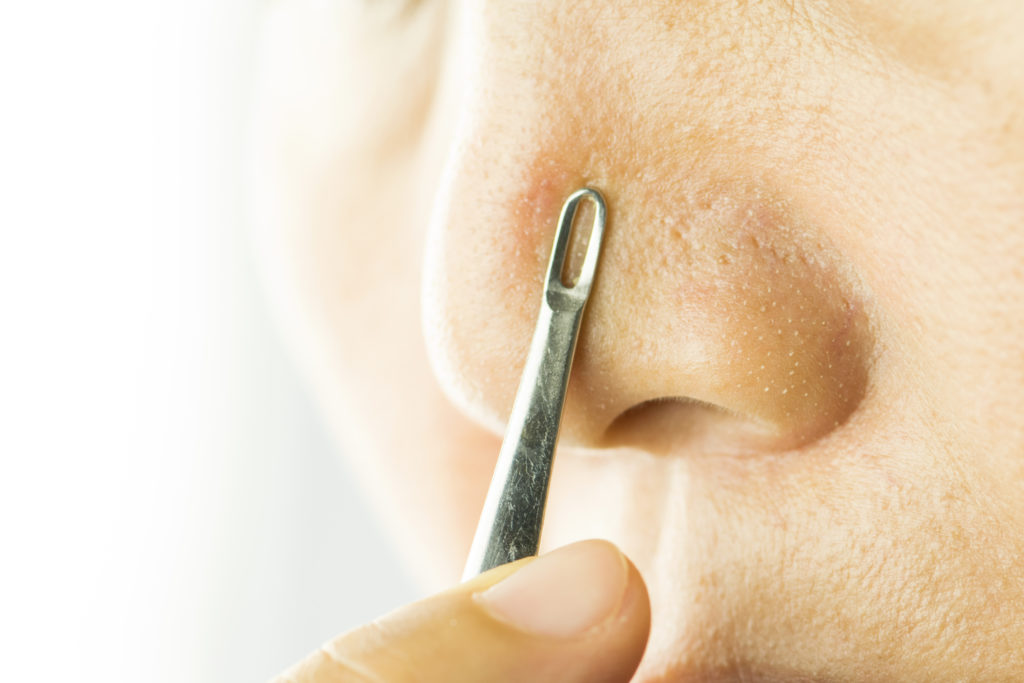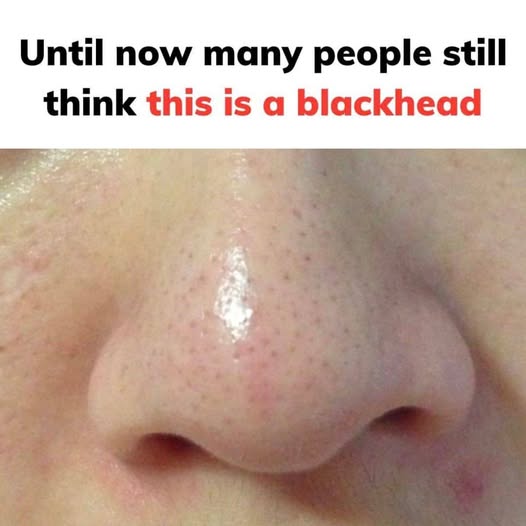If you’ve noticed small pin-sized dark dots on your nose (or around your cheeks and chin) you might instinctively assume they’re blackheads. In reality, they’re most likely something quite different: harmless anatomical features called sebaceous filaments. These tiny, tube-like structures line your pores and serve an important role in the skin’s normal oil transport system. Learning to recognise them and to stop mistaking them for skin problems can help you ease unnecessary worry and avoid harsh skincare mistakes.
What Are Sebaceous Filaments?
Sebaceous filaments are natural structures found inside your pores. Their job is to guide the oil (sebum) produced by the sebaceous glands to the surface of your skin, where it helps keep the skin and hair moisturised and protected. Although they may appear as small dots, usually on areas where oil glands are highly active (such as the nose and T-zone), they are not the same as clogged pores or blackheads. They appear because of the normal physiology of oily skin and varying pore size—not because of dirt or poor hygiene.

How to Tell Them Apart from Blackheads
While they may look similar at a glance, sebaceous filaments and blackheads are quite distinct:
- Appearance: Sebaceous filaments tend to appear as flat, small, grey-, tan- or yellow-toned dots in the skin’s surface; blackheads are darker (often black), raised or plugged bumps caused by oxidation of trapped oil and dead skin cells.
- Function: Sebaceous filaments help get oil out of the pore and onto the surface; blackheads are clogged pores with trapped material and potential acne involvement.
- Behaviour: If you try to squeeze a sebaceous filament you may see a fine waxy thread or nothing at all, and it will refill quickly; blackheads may yield a more solid plug but squeezing can cause injury, scarring or worsen the condition.
Recognising this difference is key—what seems like a “pore issue” may simply be a normal aspect of your skin.
Why They Become More Noticeable
Everyone has sebaceous filaments, yet some people notice them more than others. Various factors influence how apparent they are:
- Genetics and skin type: If you have naturally oily skin or larger hair follicles, oil flow is higher and pores may appear larger, making filaments more visible.
- Age and skin elasticity: As skin loses firmness over time, pores may stretch and the filaments can stand out more.
- Over‐washing or sun damage: When skin is over-washed or exposed to sun without protection, it can become dry, prompting the sebaceous glands to produce extra oil to compensate—and that extra oil can make filaments look larger.
These factors don’t mean your skin is unclean—they simply affect how visible these normal structures become.
How to Manage Their Appearance (Without Harming Your Skin)
Because sebaceous filaments are part of your skin’s natural oil delivery system, you cannot—and should not try to—completely remove them. However, if you’re concerned about their appearance, you can minimise their visibility and keep your skin healthy with good habits:
- Use a gentle cleanser daily to remove excess oil and debris without over-stripping the skin.
- Introduce exfoliating ingredients like salicylic acid or retinol, which help regulate oil flow and gently clear pore linings.
- Avoid aggressive “pore-strip” routines or squeezing: these can damage the skin barrier, enlarge pores, cause inflammation or scarring, and will not make filaments go away permanently.
- Choose non-comedogenic (non-pore-clogging) skincare products and avoid heavy oils or rich occlusive layers if you’re prone to visible filaments.

Protect your skin from sun exposure and maintain skin hydration: when skin is healthy, it tends to regulate oil production more evenly, which can reduce how obvious the filaments appear.
The goal is not flawless, invisible pores (which is unrealistic), but clear, healthy-looking skin and pores that appear refined rather than obviously enlarged.
Final Thoughts
If you’re seeing tiny dots on your nose or around your T-zone and worrying that they’re blackheads, take heart: more likely than not, they’re simply sebaceous filaments—normal and harmless. Instead of fighting them aggressively, focus on consistent, gentle skincare that supports your skin’s health and oil balance. Recognising the difference between what’s natural and what’s a true skin concern will save you both stress and unnecessary skin damage—and help you appreciate that real skin has texture and features that skincare filters don’t always show.

















